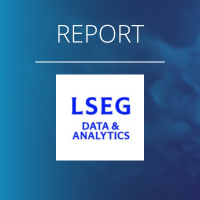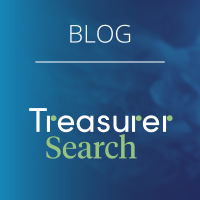How to build a business case for a payment hub?
By Nomentia
Every morning, global treasury teams brace for impact. Payments are scattered across dozens of banks, each with its own portal, passwords, and approval process.
By Antti Pekkala, Product Marketing Manager Nomentia

One region still faxes payment instructions. Another logs in manually to multiple platforms just to confirm cash positions. No central visibility and no control. Just chaos.
The ERP systems. Disconnected. Verifying balances? A manual marathon. The team logs into bank portals one by one, piecing together cash positions across hundreds of accounts. One number is always out of sync. Is it an error? A missing transaction? A delayed payment? Who knows.
Meanwhile, costs keep climbing. Bank fees for every account. IT support for every new bank connection. A payment approval takes hours instead of minutes. A simple reconciliation? Days.
Then, the near disaster. A single fraudulent payment—disguised among thousands—almost slipped through. Millions nearly lost. A last-minute catch saved the company. This time.
The CFO asks: How did this happen? The real question is: Why did it not happened sooner?
So, how could you manage this better as a treasury or finance team?
Advice from an expert: Daniel Neubauer
With over 3 years as a Senior Solution Manager at Nomentia, Daniel Neubauer is a highly experienced professional in the field of financial process automation. His expertise spans multiple areas, including accounts payable (AP), cash management, payments, collections, and document management processes. Daniel’s extensive background in automating and optimizing financial operations makes him an authority on the integration of automated systems in reconciliation.
.png?width=327&height=327&name=Daniel-Neubauer%20(1).png)
The overwhelmed Treasurer
Lena used to love her job. She became a treasurer because she liked solving problems and making things run smoothly. But now, she spends her days fighting fires, as payments keep growing: more countries, more currencies, more urgency. But her team? Same size. Same tools.
The bank fees pile up. Every new account means another charge. Another set of approvals. Another login to be sorted out.
Regulations tighten and KYC rules demand endless paperwork. A rejected payment because of sanctions in one country triggers a compliance review in another. She’s expected to keep up, but without the systems to do it.
Worst of all? She has no real control. The company’s payment landscape is a patchwork of different banks, portals, and regional processes. By the time she sees a problem, it’s already too late.
She’s raised the alarm more than once. The risks are clear. The costs are rising. But leadership isn’t listening.
Because as long as payments go through, who cares how the job gets done?
How to improve your payments set-up?
No one questions a system that seems to work. As long as vendors get paid and cash is in the bank, leadership moves on to bigger things.
But behind the scenes, Treasury and Accounts Payables are juggling a number of systems built over years and long ago. Acquisitions brought new banks, new accounts, new systems—never fully integrated. Regional teams found their own ways to handle payments. Now, no two processes look the same.
It’s inefficient. It’s expensive. It’s a risk.
One missed sanction check, and a critical payment is lost for good. A forgotten account in an acquired bank becomes an open door for fraud. A failed payment delays a critical shipment. When something finally breaks, it won’t be small.
Treasurers see the cracks before anyone else. But until disaster strikes, no one listens.
The misstep: Treasurers selling themselves short
Some treasurers see the problem but hesitate to push for change. As this will add to the workload.
So, they stay in the weeds. Approving payments. Chasing down errors. Logging into bank portals like it’s still 2009. A great year, but some time ago already.
But treasury isn’t about pushing buttons. It’s about managing risk. It’s about optimizing cash. It’s about driving efficiency. A treasurer who fights for a smarter, more controlled payment process is ensuring they can spend their time on more value-adding tasks.
They’re proving just how valuable they really are.
How to win over the CFO with a rock-solid business case?
Step 1: Speak numbers & ROI
Decisions at the top come down to costs, risks, and returns, so translating impact into numbers.
- Fewer bank accounts = lower fees. Closing redundant accounts cuts costs immediately.
- Faster, standardized processes = lower operational expenses. Less manual work, fewer errors, smaller treasury teams needed to handle payments.
- Stronger IT integration = fewer inefficiencies. No more wasting time logging into countless bank portals.
Want buy-in? Show the math. Estimate savings, calculate ROI, and prove that a payment hub pays for itself.
Step 2: Put a spotlight on compliance and risk reduction
Regulators don’t care if the treasury is overwhelmed. A missed sanction check that causes payment to be frozen or a fraudulent transaction can cost millions.
A payment hub:
- Stops fraud before it happens. Centralized controls make unauthorized payments much harder to slip through.
- Prevents costly regulatory mistakes. Automated compliance checks ensure payments don’t get flagged—or worse, blocked.
CFOs don’t like surprises. A payment hub makes sure treasury or accounts payable isn’t the next one.
Gaining control: The treasurer’s new reality
Lena used to spend her days fighting fires. Too many payments, too many banks, too little control. She saw the risks, the waste, the inefficiencies—but no one listened. Because as long as payments went through, who cared how messy the process was?
Now? They listen.
- Payments flow seamlessly. No more logging into endless portals, no more manual workarounds. Payment files are automated across all systems.
- A single, standardized process replaced the chaos. Fewer errors. Faster reconciliations. One way of working, everywhere.
- Bank accounts closed. Fees eliminated. The savings alone justified the investment. Treasury now operates with half the bank accounts they used to. The savings alone justified the investment.
- Compliance isn’t an afterthought. It’s built in. Payments don’t get frozen because of overlooked sanctions. Audits don’t turn into fire drills.
- Fraud detection tools quietly catch threats before they become headlines. No treasury team wants to be the one that missed a fraudulent payment. Now, they don’t have to worry.
But Lena’s job isn’t done. It’s different. Instead of chasing payments, she’s using real-time data to make better funding and liquidity decisions. She’s managing risk proactively and protecting the company from fraud and operational blind spots. She’s driving strategy and helping leadership decide which banks to work with, where to centralize payments, and how to reduce costs without increasing risk.
She didn’t automate herself out of a job. She automated the noise so she could finally do the work that matters.
The real question is: Are you ready for the work that comes after the approval?
Winning the CFO’s buy-in was the first step. Implementing the payment hub was the second. But real transformation doesn’t stop at go-live. Lena’s team isn’t just processing payments faster. They’ve redefined how treasury operates.
The biggest shift? Treasury is no longer stuck in execution mode. They’re leading.
- They’re making smarter liquidity decisions with real-time visibility.
- They’re guiding leadership on banking strategy, cost reduction, and risk mitigation.
- They’re shaping a payments function that supports business growth—not just survival.
So, ask yourself: Are you ready to stop fighting fires and start building something better?
Can’t get enough? Check out these latest items
 https://treasuryxl.com/wp-content/uploads/2025/12/Copy-of-Live-Session-Nomentia-1.png
200
200
treasuryXL
https://treasuryxl.com/wp-content/uploads/2018/07/treasuryXL-logo-300x56.png
treasuryXL2025-12-19 08:49:372025-12-19 09:41:43Recap & Recording: Corporate Treasury in 2026 and beyond
https://treasuryxl.com/wp-content/uploads/2025/12/Copy-of-Live-Session-Nomentia-1.png
200
200
treasuryXL
https://treasuryxl.com/wp-content/uploads/2018/07/treasuryXL-logo-300x56.png
treasuryXL2025-12-19 08:49:372025-12-19 09:41:43Recap & Recording: Corporate Treasury in 2026 and beyond https://treasuryxl.com/wp-content/uploads/2024/01/Template_VACANCY-featured.png
200
200
treasuryXL
https://treasuryxl.com/wp-content/uploads/2018/07/treasuryXL-logo-300x56.png
treasuryXL2025-12-19 08:20:412025-12-19 08:20:41Vacancy Service Operations Manager (Treasury Tech) – Vienna
https://treasuryxl.com/wp-content/uploads/2024/01/Template_VACANCY-featured.png
200
200
treasuryXL
https://treasuryxl.com/wp-content/uploads/2018/07/treasuryXL-logo-300x56.png
treasuryXL2025-12-19 08:20:412025-12-19 08:20:41Vacancy Service Operations Manager (Treasury Tech) – Vienna https://treasuryxl.com/wp-content/uploads/2025/12/FinanceKey-Featured-1.png
200
200
treasuryXL
https://treasuryxl.com/wp-content/uploads/2018/07/treasuryXL-logo-300x56.png
treasuryXL2025-12-18 07:00:142025-12-18 18:17:55Pivoting in FinanceKey: turn raw data into instant insight
https://treasuryxl.com/wp-content/uploads/2025/12/FinanceKey-Featured-1.png
200
200
treasuryXL
https://treasuryxl.com/wp-content/uploads/2018/07/treasuryXL-logo-300x56.png
treasuryXL2025-12-18 07:00:142025-12-18 18:17:55Pivoting in FinanceKey: turn raw data into instant insight https://treasuryxl.com/wp-content/uploads/2025/08/LSEG-BLOGS-featured-10.png
200
200
treasuryXL
https://treasuryxl.com/wp-content/uploads/2018/07/treasuryXL-logo-300x56.png
treasuryXL2025-12-17 07:00:252025-12-16 08:55:07Test Data as a Service
https://treasuryxl.com/wp-content/uploads/2025/08/LSEG-BLOGS-featured-10.png
200
200
treasuryXL
https://treasuryxl.com/wp-content/uploads/2018/07/treasuryXL-logo-300x56.png
treasuryXL2025-12-17 07:00:252025-12-16 08:55:07Test Data as a Service https://treasuryxl.com/wp-content/uploads/2023/03/Treasurer-Search-Logo.png
200
200
treasuryXL
https://treasuryxl.com/wp-content/uploads/2018/07/treasuryXL-logo-300x56.png
treasuryXL2025-12-16 09:27:252025-12-16 09:27:25Interim Treasury Manager @ Treasurer Search
https://treasuryxl.com/wp-content/uploads/2023/03/Treasurer-Search-Logo.png
200
200
treasuryXL
https://treasuryxl.com/wp-content/uploads/2018/07/treasuryXL-logo-300x56.png
treasuryXL2025-12-16 09:27:252025-12-16 09:27:25Interim Treasury Manager @ Treasurer Search https://treasuryxl.com/wp-content/uploads/2025/06/Nirav-Interview-1.png
200
200
treasuryXL
https://treasuryxl.com/wp-content/uploads/2018/07/treasuryXL-logo-300x56.png
treasuryXL2025-12-16 07:00:212025-12-15 12:30:31Stablecoins: The Silent Revolution Is Already Here
https://treasuryxl.com/wp-content/uploads/2025/06/Nirav-Interview-1.png
200
200
treasuryXL
https://treasuryxl.com/wp-content/uploads/2018/07/treasuryXL-logo-300x56.png
treasuryXL2025-12-16 07:00:212025-12-15 12:30:31Stablecoins: The Silent Revolution Is Already Here https://treasuryxl.com/wp-content/uploads/2024/02/Featured_Treasurer-Search.png
200
200
treasuryXL
https://treasuryxl.com/wp-content/uploads/2018/07/treasuryXL-logo-300x56.png
treasuryXL2025-12-15 07:00:062025-12-19 08:28:55The Future of Financial Messaging: Migrating from MT940 to ISO 20022
https://treasuryxl.com/wp-content/uploads/2024/02/Featured_Treasurer-Search.png
200
200
treasuryXL
https://treasuryxl.com/wp-content/uploads/2018/07/treasuryXL-logo-300x56.png
treasuryXL2025-12-15 07:00:062025-12-19 08:28:55The Future of Financial Messaging: Migrating from MT940 to ISO 20022 https://treasuryxl.com/wp-content/uploads/2025/09/Nomentia-BLOGS-featured-5.png
200
200
treasuryXL
https://treasuryxl.com/wp-content/uploads/2018/07/treasuryXL-logo-300x56.png
treasuryXL2025-12-12 12:54:092025-12-12 13:07:57Nomentia Announces Leadership Transition to Drive Next Phase of Growth
https://treasuryxl.com/wp-content/uploads/2025/09/Nomentia-BLOGS-featured-5.png
200
200
treasuryXL
https://treasuryxl.com/wp-content/uploads/2018/07/treasuryXL-logo-300x56.png
treasuryXL2025-12-12 12:54:092025-12-12 13:07:57Nomentia Announces Leadership Transition to Drive Next Phase of Growth https://treasuryxl.com/wp-content/uploads/2023/03/Treasurer-Search-Logo.png
200
200
treasuryXL
https://treasuryxl.com/wp-content/uploads/2018/07/treasuryXL-logo-300x56.png
treasuryXL2025-12-11 14:07:112025-12-18 11:06:12Sales Director Investments @ Treasurer Search
https://treasuryxl.com/wp-content/uploads/2023/03/Treasurer-Search-Logo.png
200
200
treasuryXL
https://treasuryxl.com/wp-content/uploads/2018/07/treasuryXL-logo-300x56.png
treasuryXL2025-12-11 14:07:112025-12-18 11:06:12Sales Director Investments @ Treasurer Search


